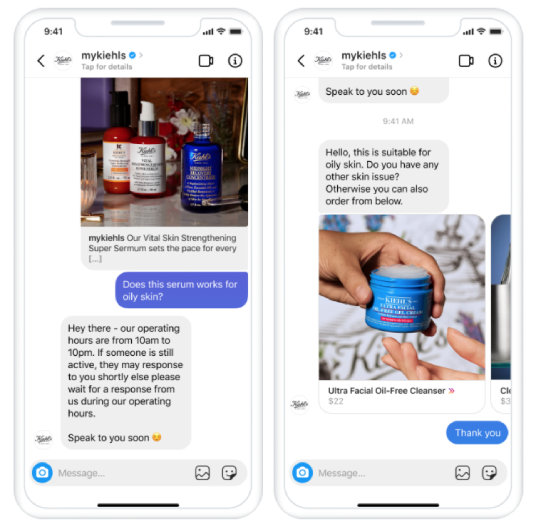All Communications in One Place
First and foremost, the main advantage of the API update is that brands can now access all of their customer conversations through a unified system. As explained by Facebook Messenger’s Product Manager, Marion Boiteux, “Many businesses want to manage all communications in one place. Today, people are contacting businesses through many different channels - phone calls, emails, posting on pages, sending messages, and more. And we learned from businesses that it’s easiest to manage these all in one place, and with one view. The API allows developers to make it possible for businesses to do this with a single platform.” This means messages are less likely to get missed or forgotten about - and ensures that brands’ various social media pages are each approached with the same level of importance.
Product Inquiries Become Sales
Instagram posts from e-commerce businesses often spark product inquiries from potential buyers. For example, since integrating the new API, beauty brand Kiehl’s reports that it is now driving 30% more qualified leads through Instagram messages compared to its other channels and is converting around 20% of queries into sales.


Go Private
It’s easier and more appropriate to handle negativity via an email or DM than in the comments section. While you should respond publicly first, so other users can see that you’re listening and trying to help, it’s best to turn the conversation into a private one as soon as possible - especially if resolving the issue requires the collection of confidential details about the customer, such as their order number, phone number or address. Plus, if someone is really angry, you don’t want them to keep commenting publicly and drawing more attention to the complaint for others to witness.
Learn and Grow
A great way to make negative comments feel less discouraging is to use them as learning tools. Yes, a customer has had a poor experience with your business and that’s disheartening to hear - but they’ve also presented you with an opportunity to adapt, grow and discover which areas of your brand need improvement. This is notably true for cases where a number of people have complained about the same problem, as these will bring to your attention any processes that evidently aren't working and require investigation.
By thanking the customer for their message and showing that you’re grateful for the information they’ve given, you can put a positive spin on the ordeal and approach their criticism in a more constructive, forward-thinking manner. After all, 52% of people believe that companies need to take action on feedback provided by their customers, and brands are viewed more favourably by 77% of consumers if they proactively invite and accept feedback.


Summary
For some brands, the risk of receiving negative comments is enough to deter them from using social media altogether - but recognising that they’re an inevitable part of the online experience is necessary. And remember: people most likely have good things to say about your company as well, so don’t ignore those comments either! Replying to positive messages helps take the spotlight away from the bad ones and encourages more users to share their support.
Need a helping hand from the experts? Learn about our Social Reputation & Crisis Control service to find out how our team can prevent social media complaints from escalating and keep your business on top of its PR game.









